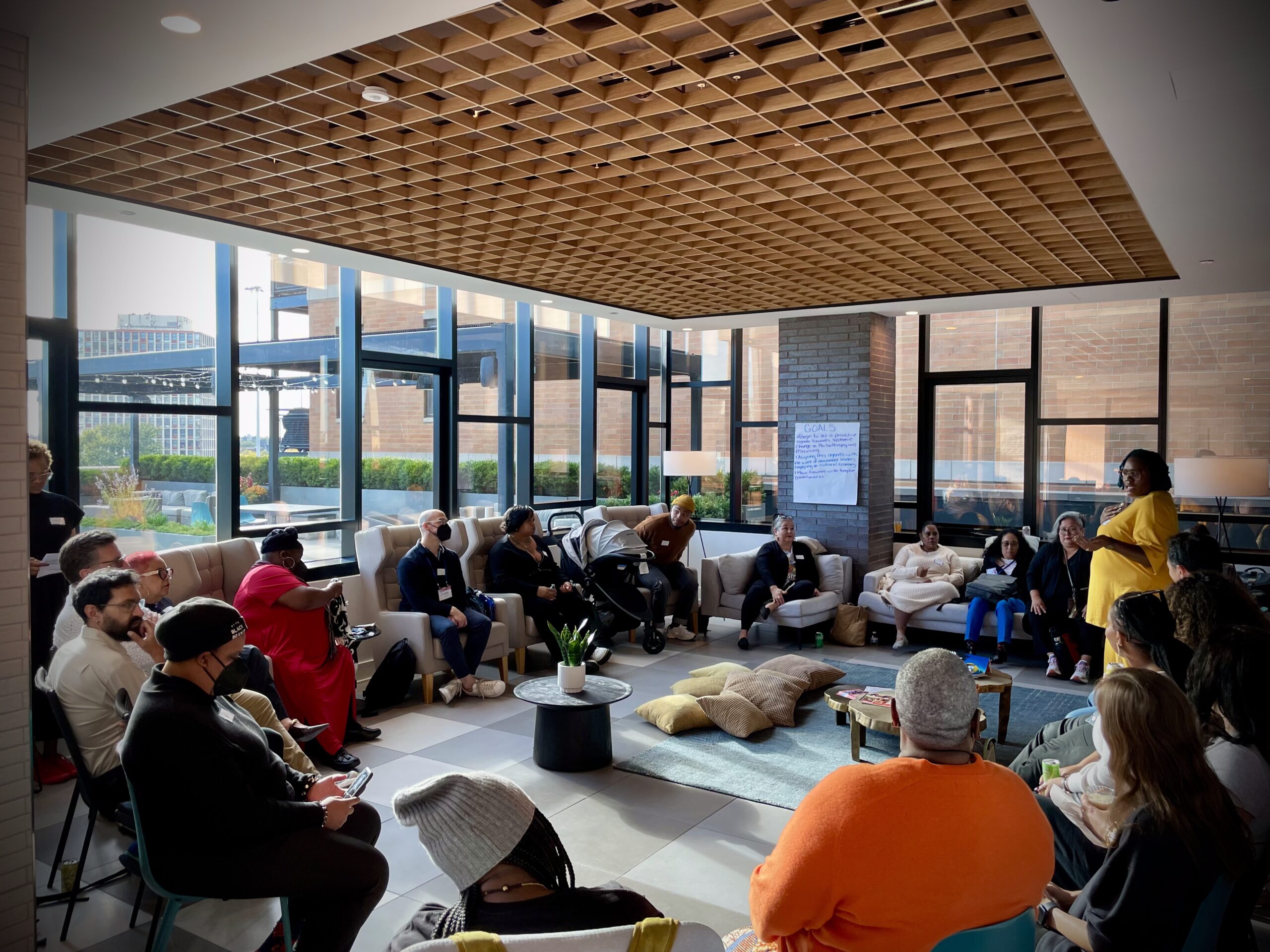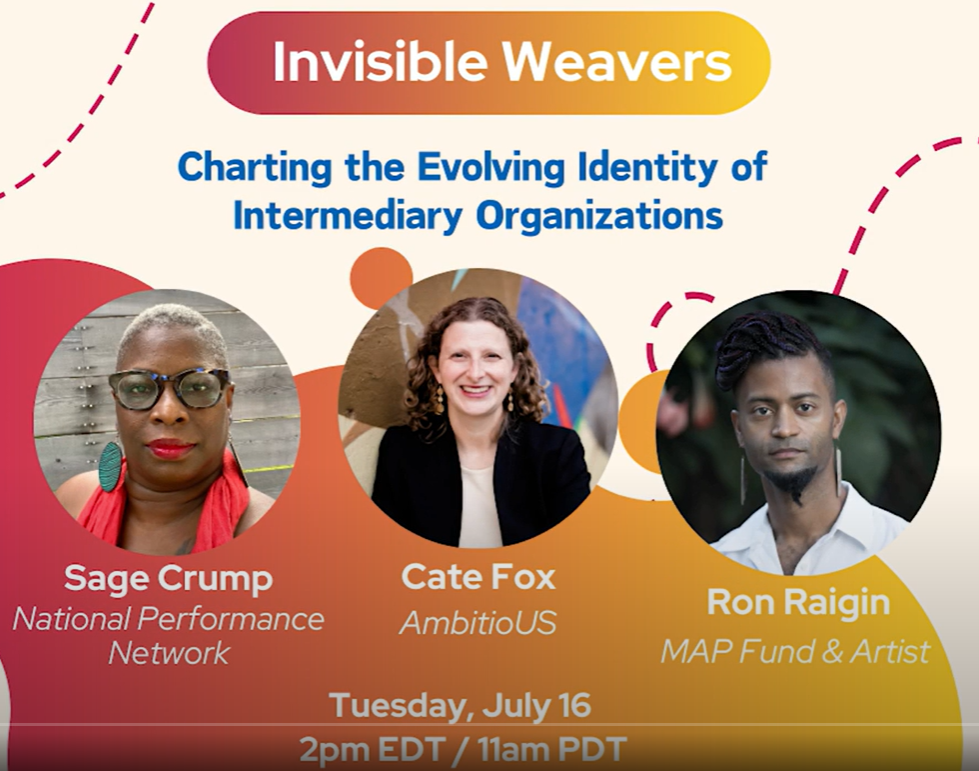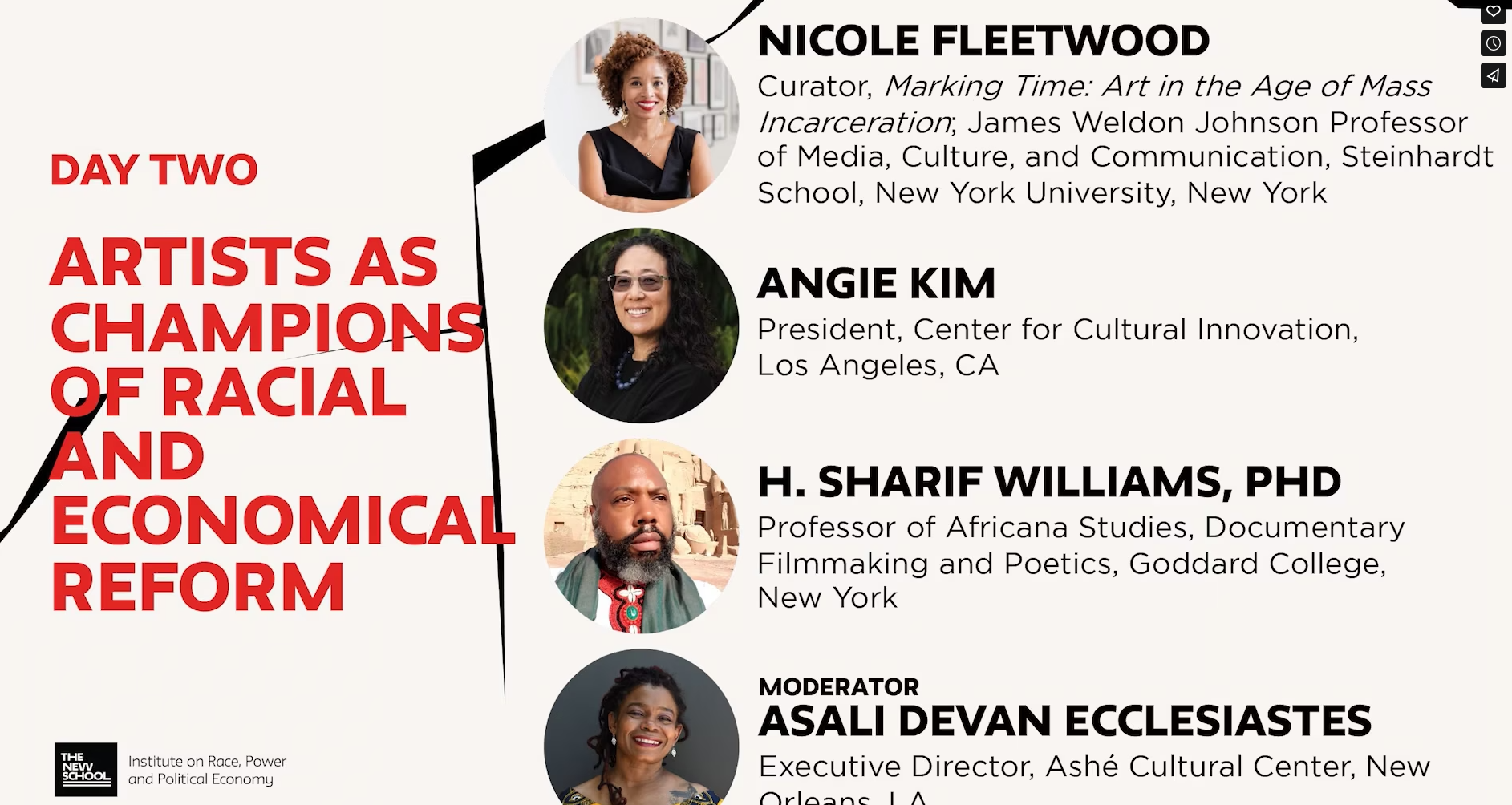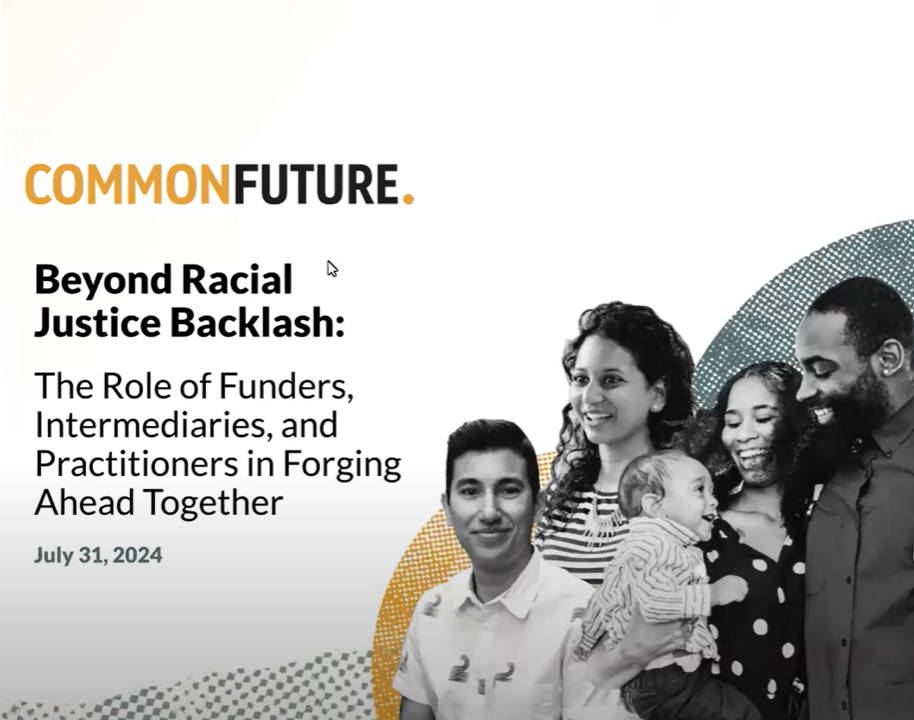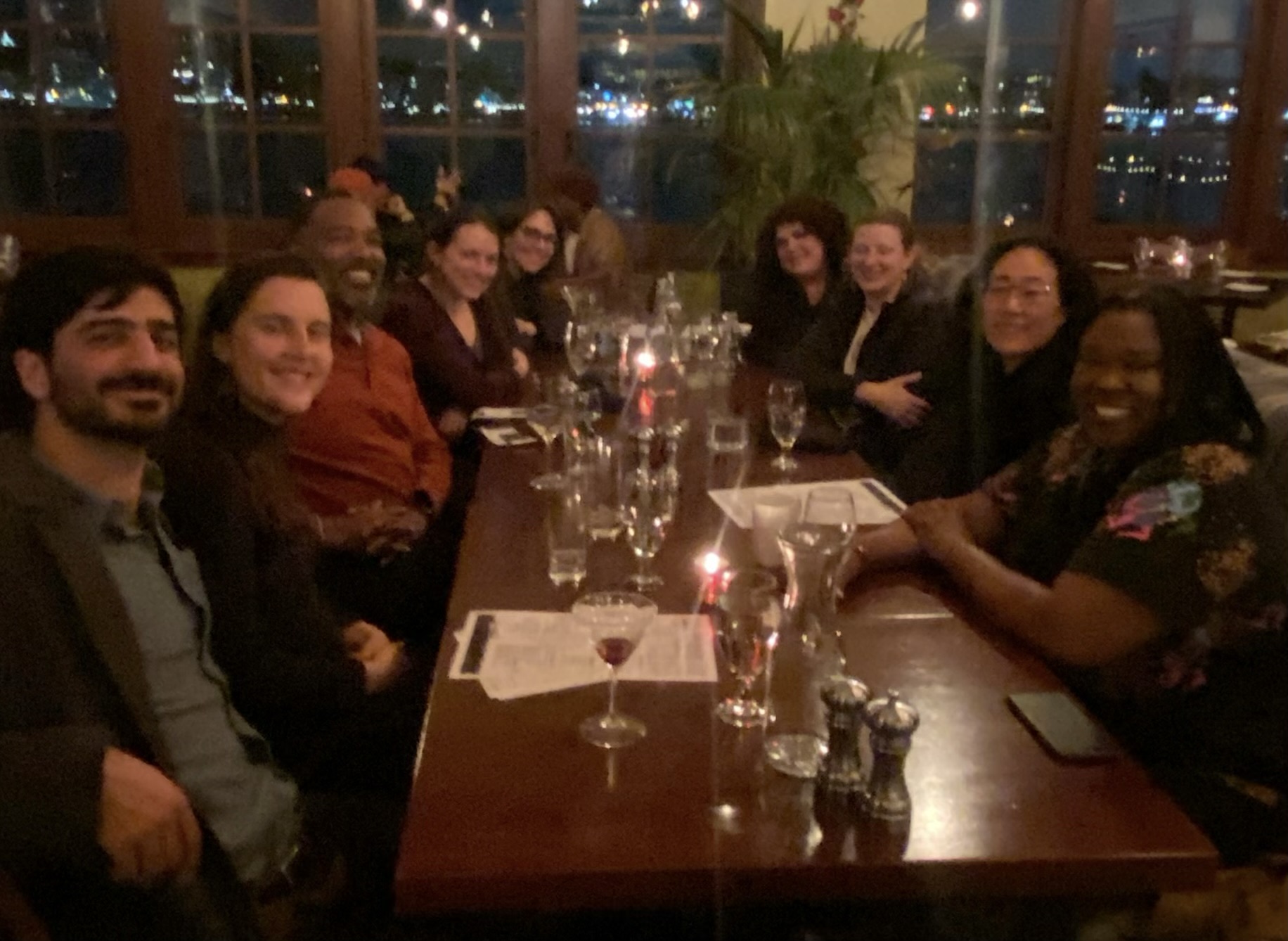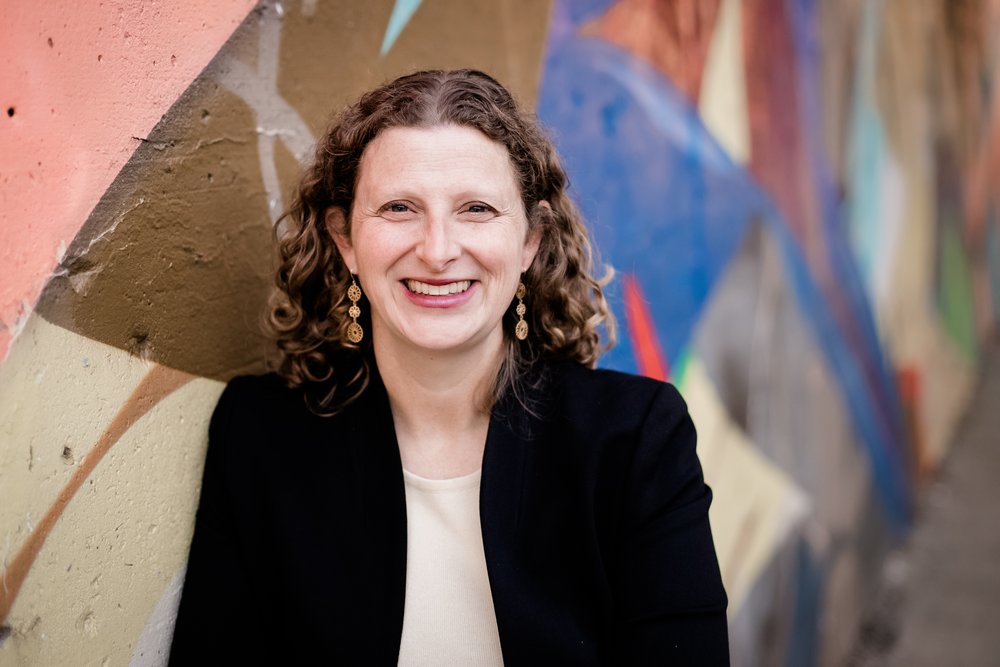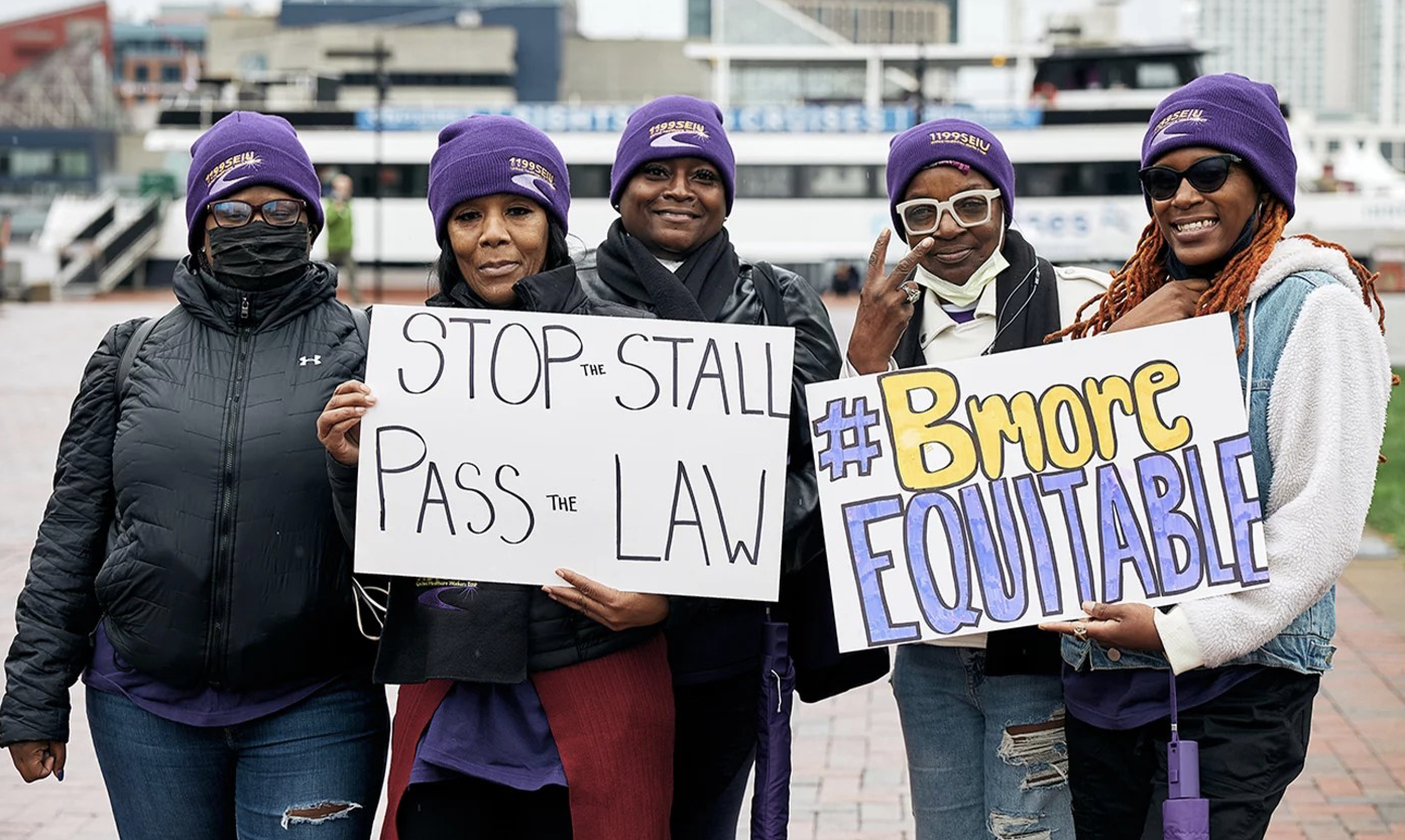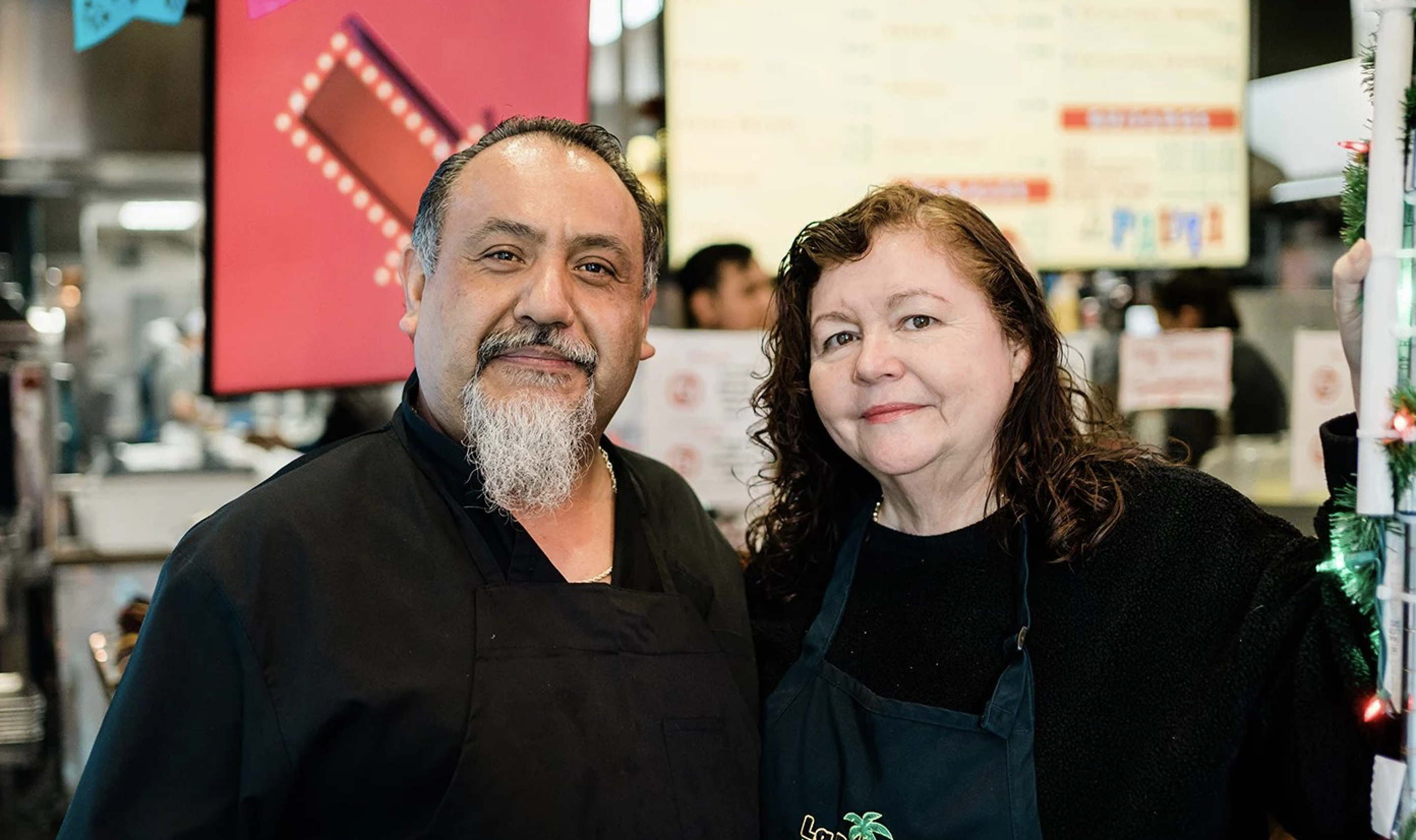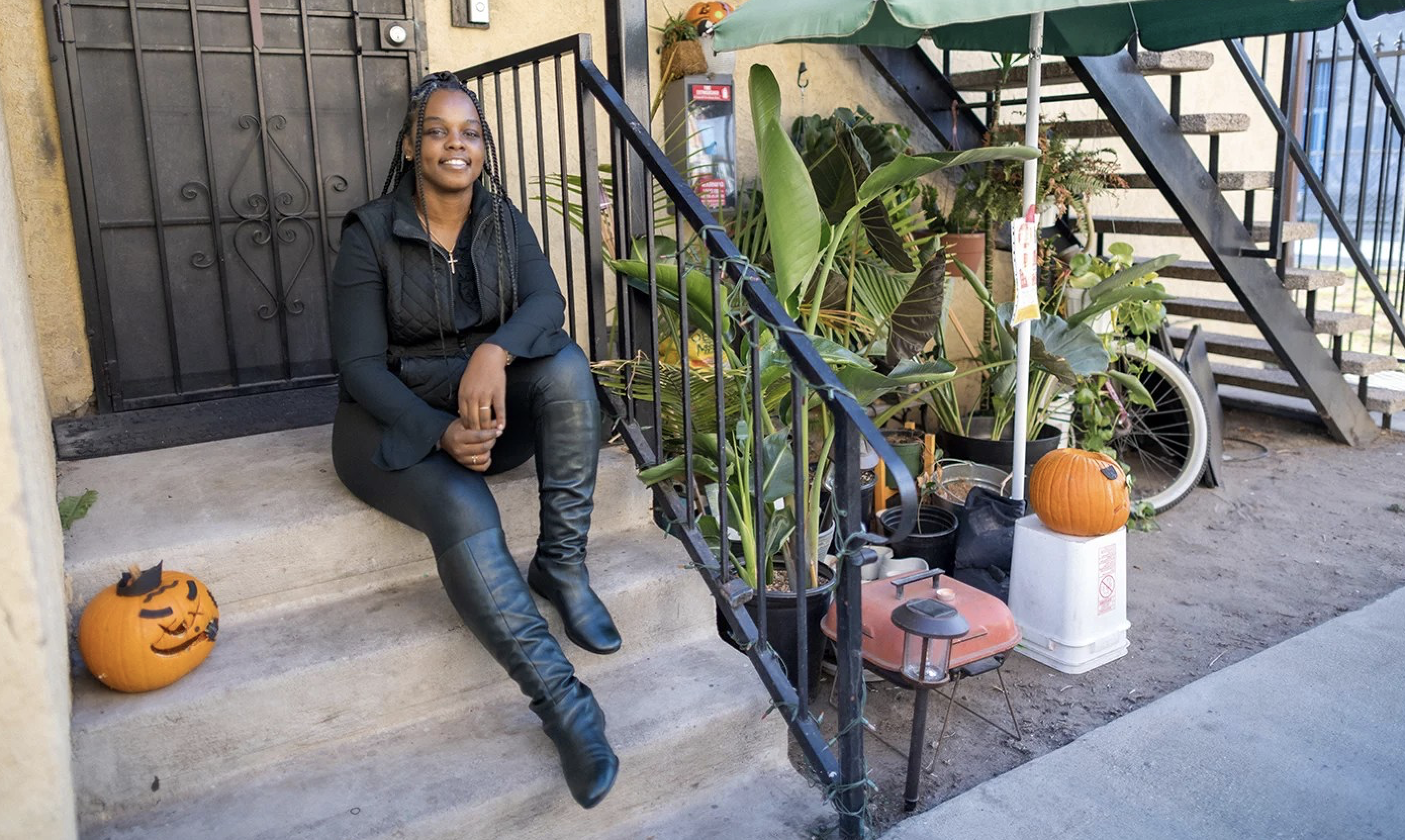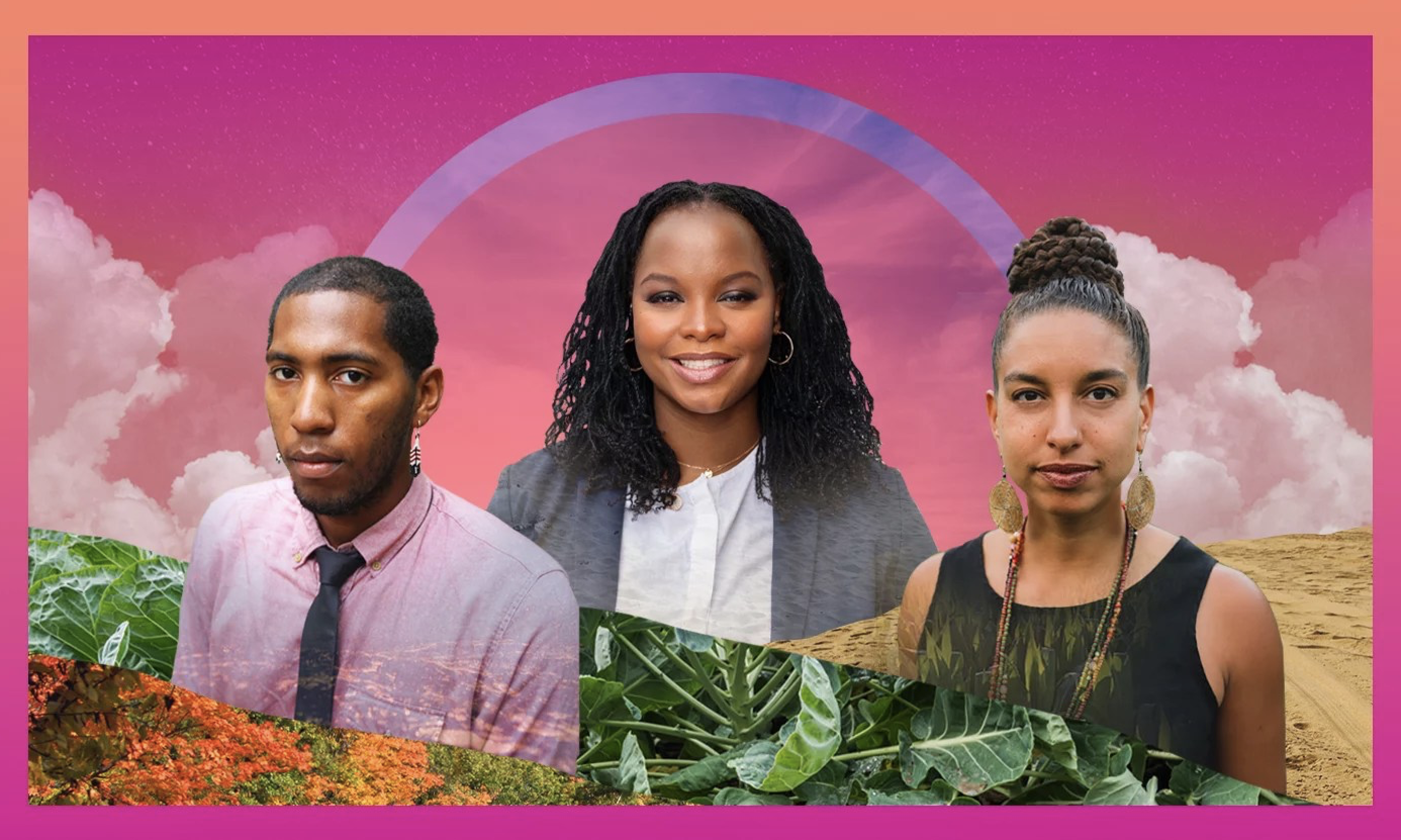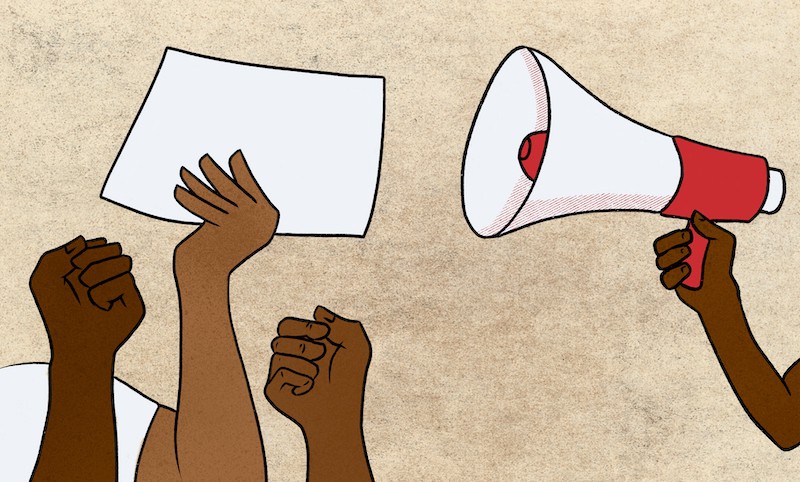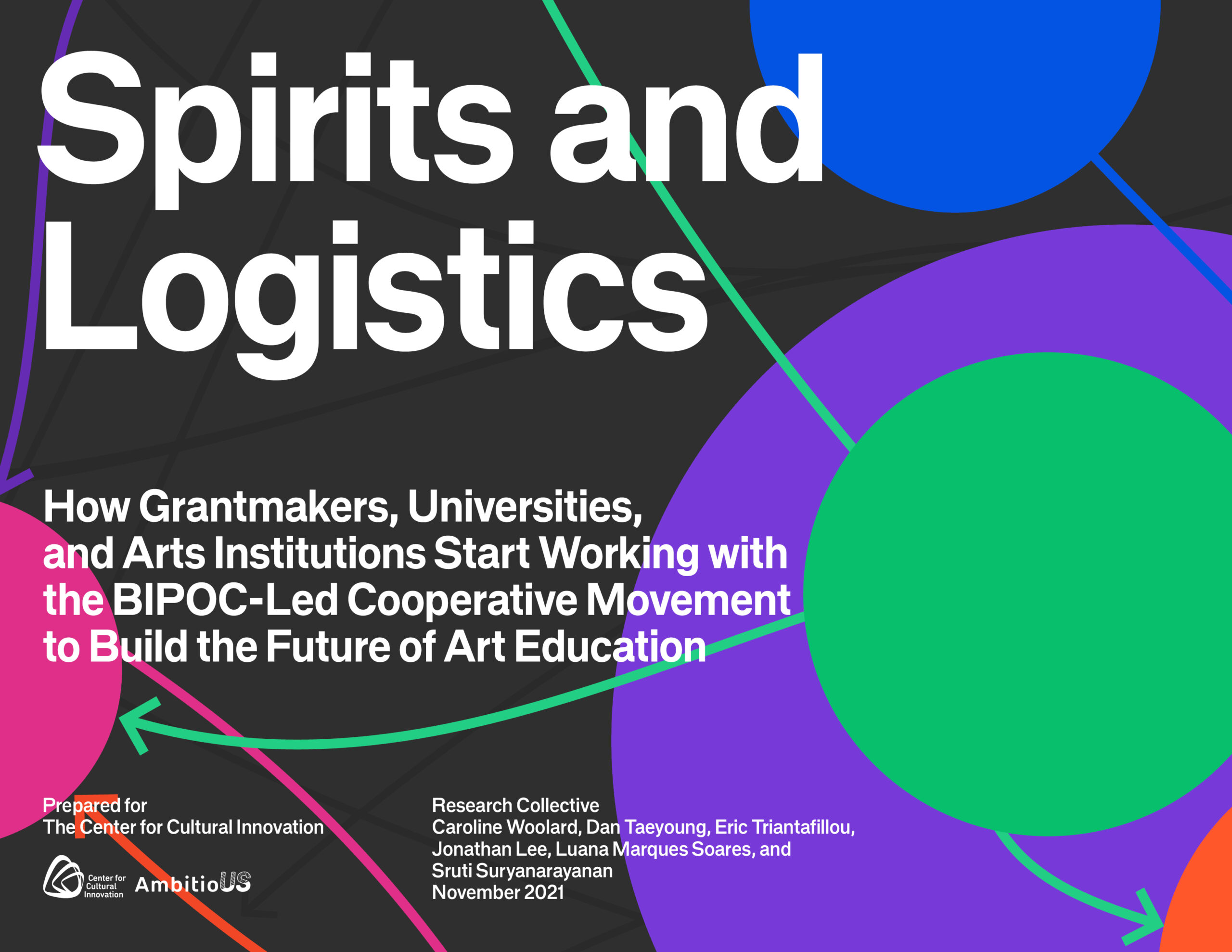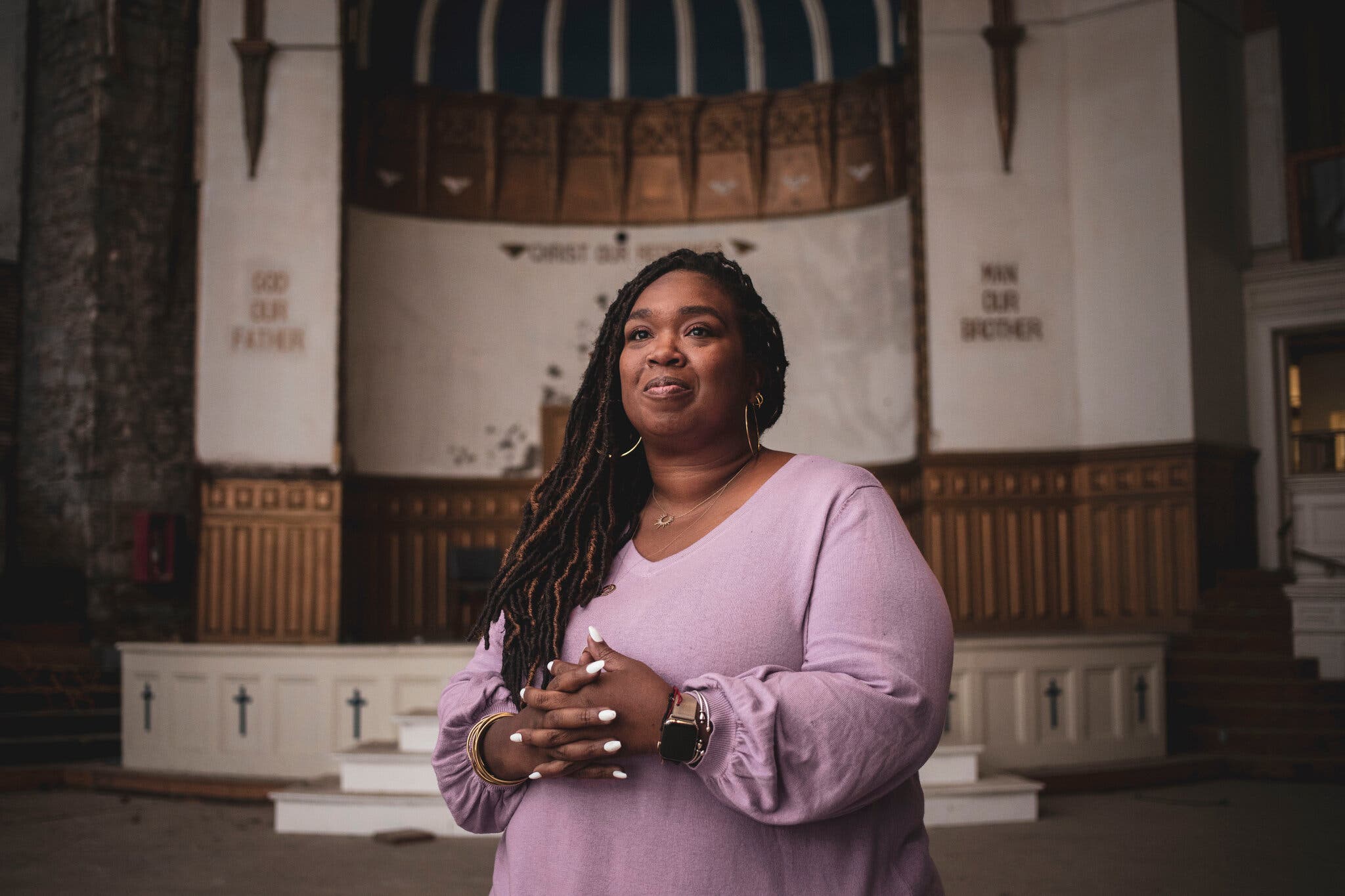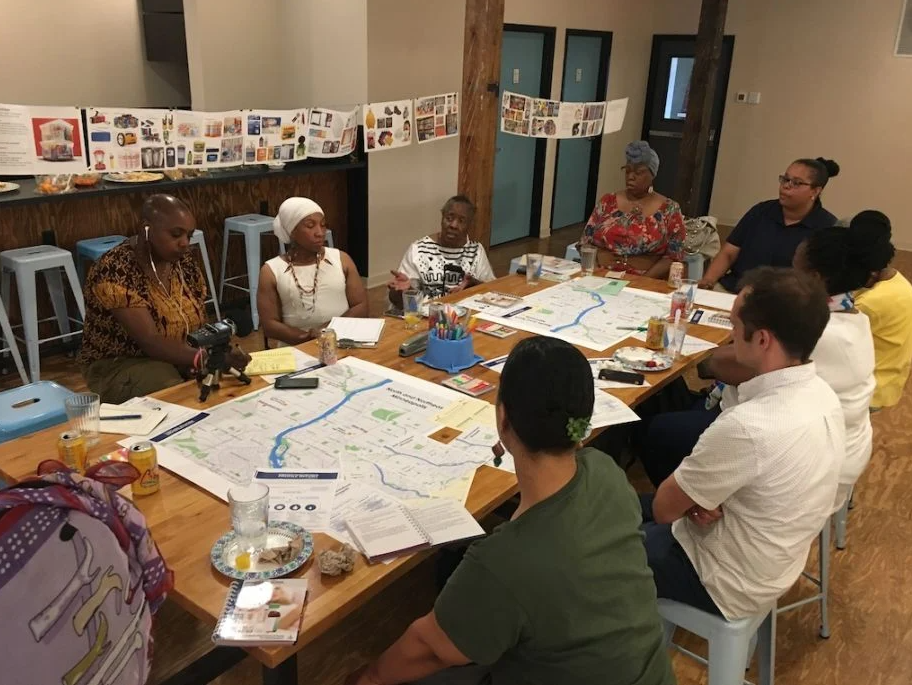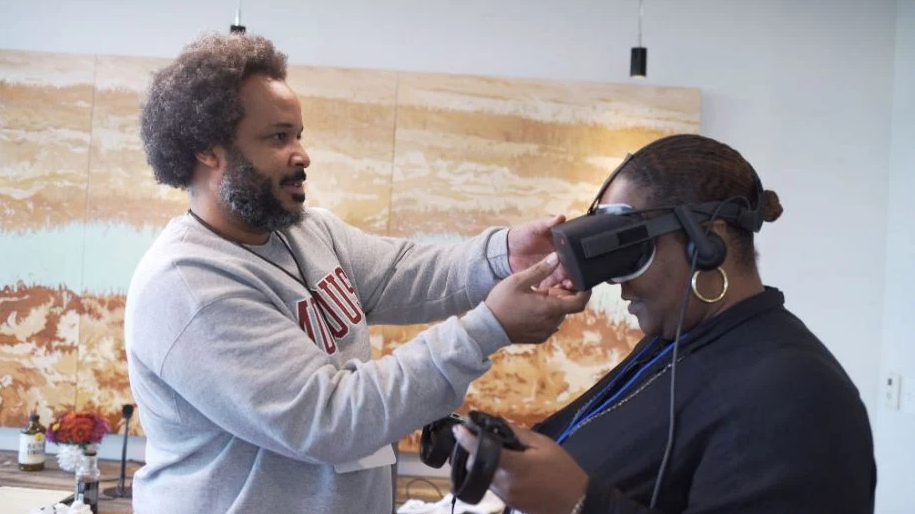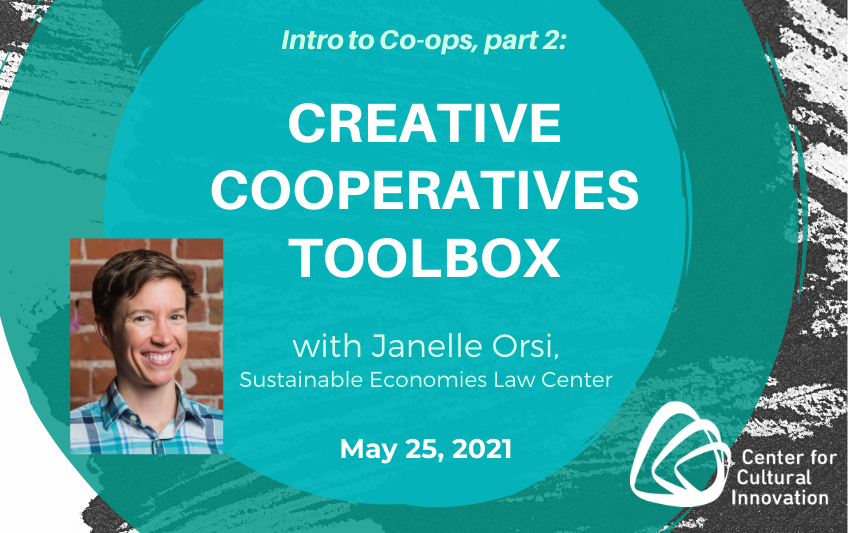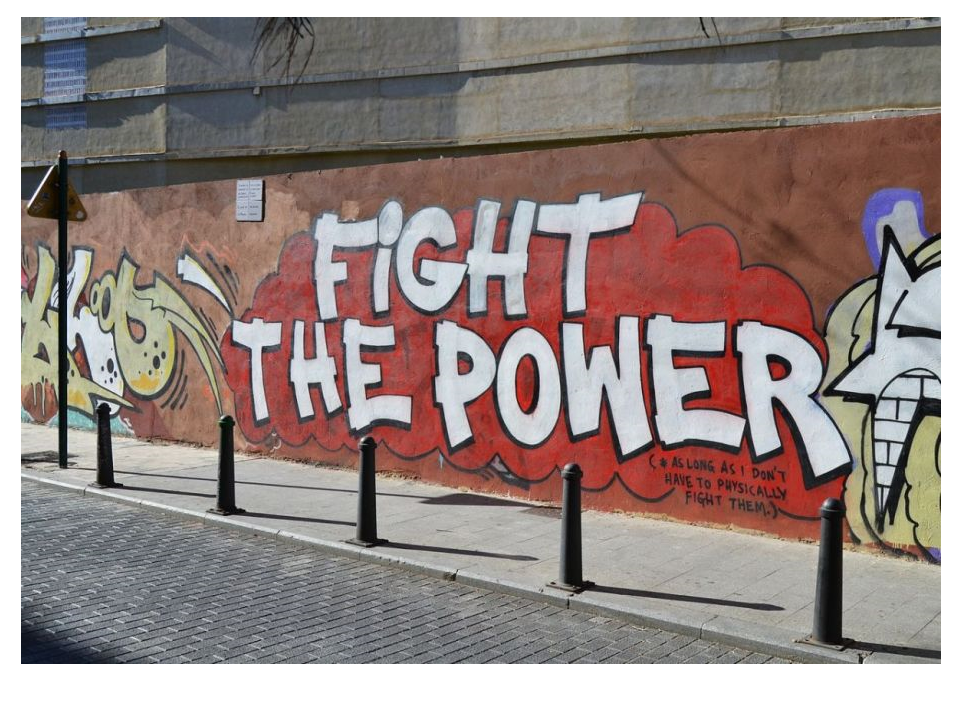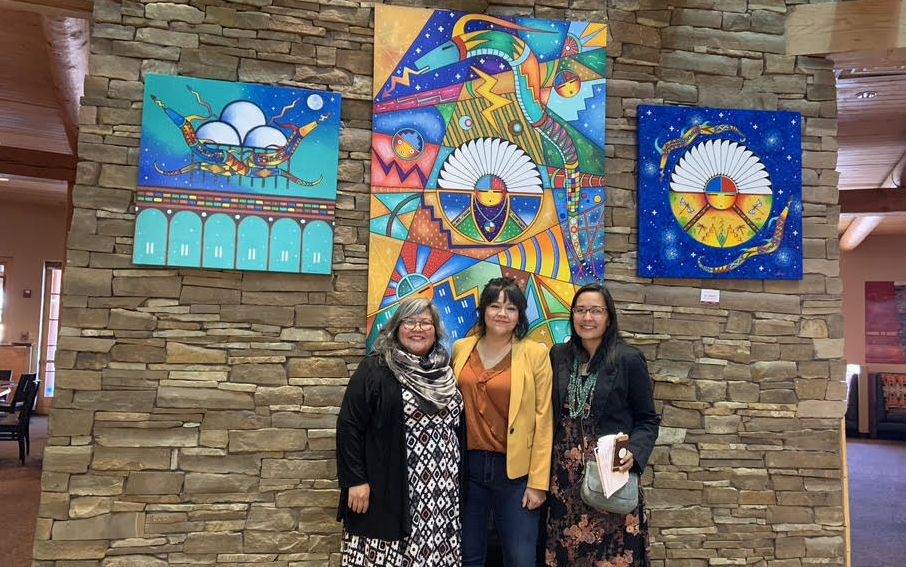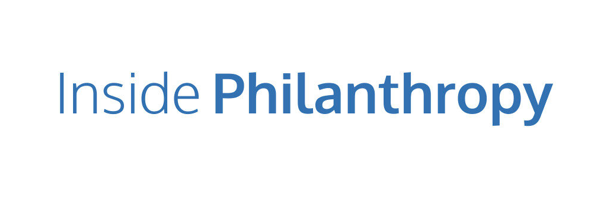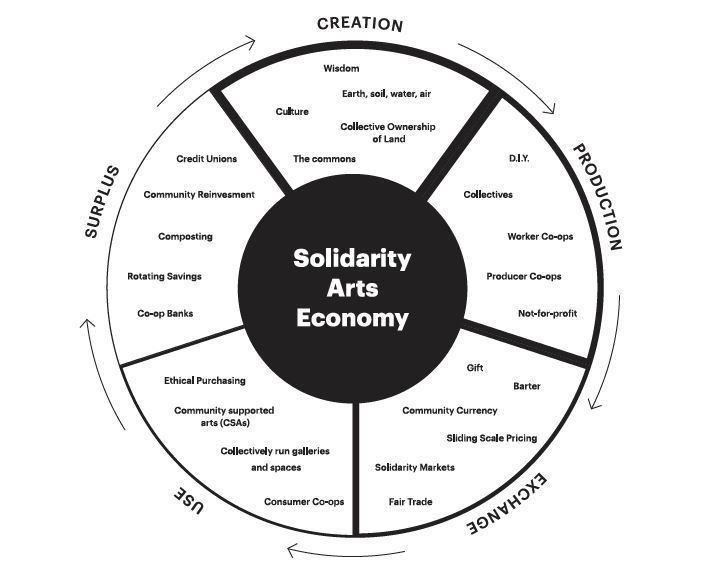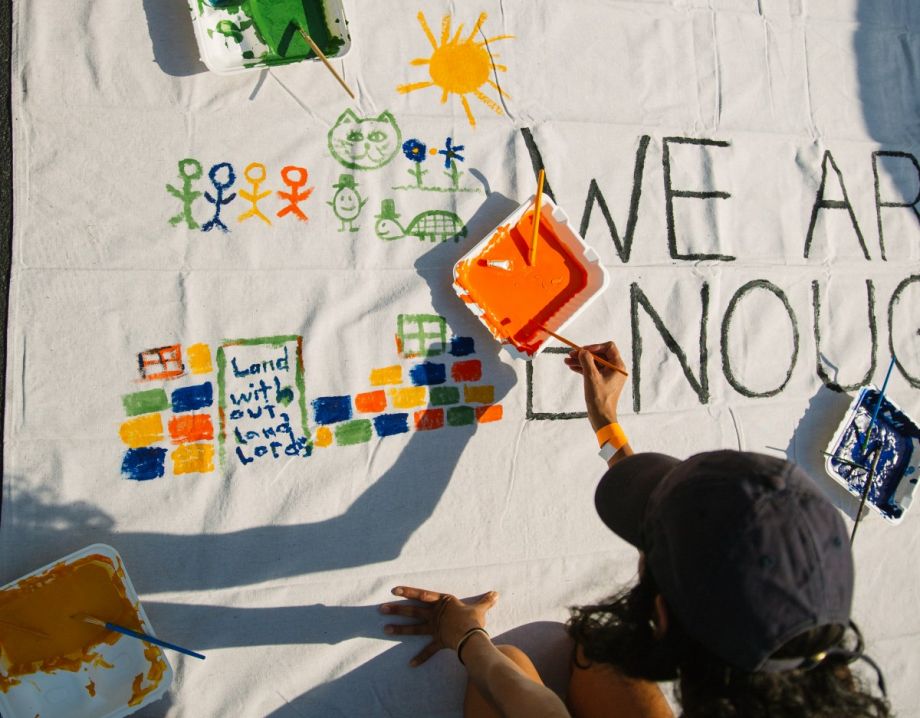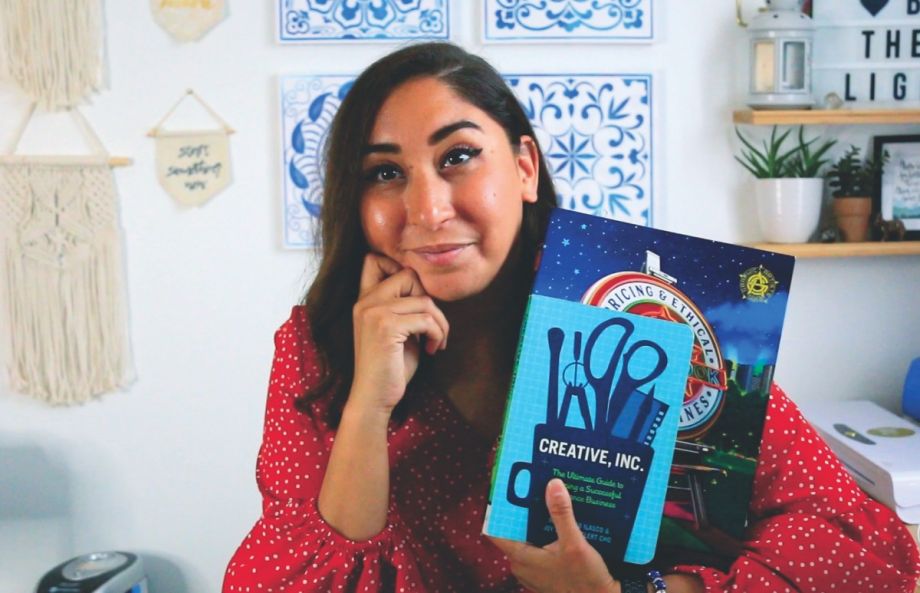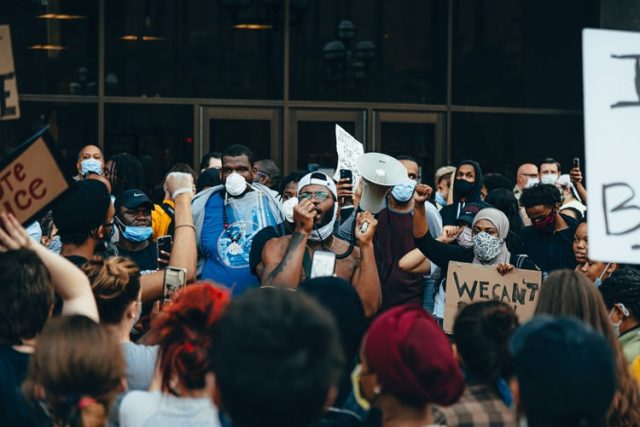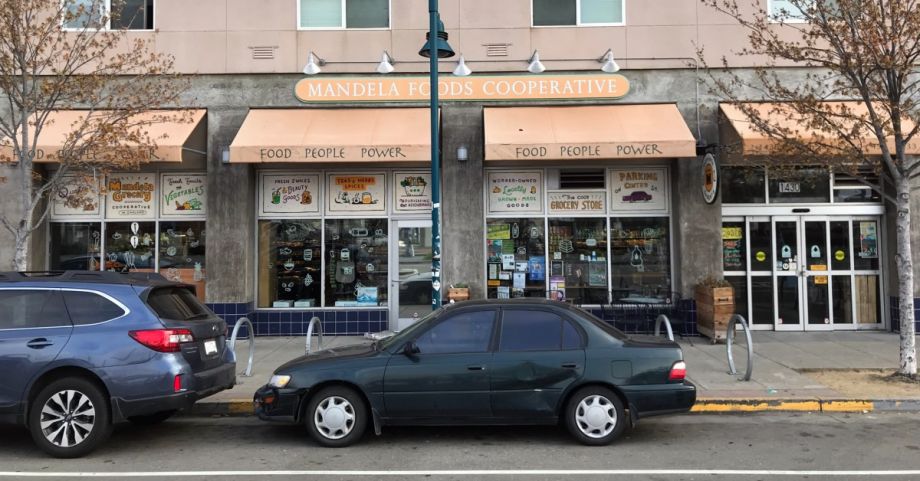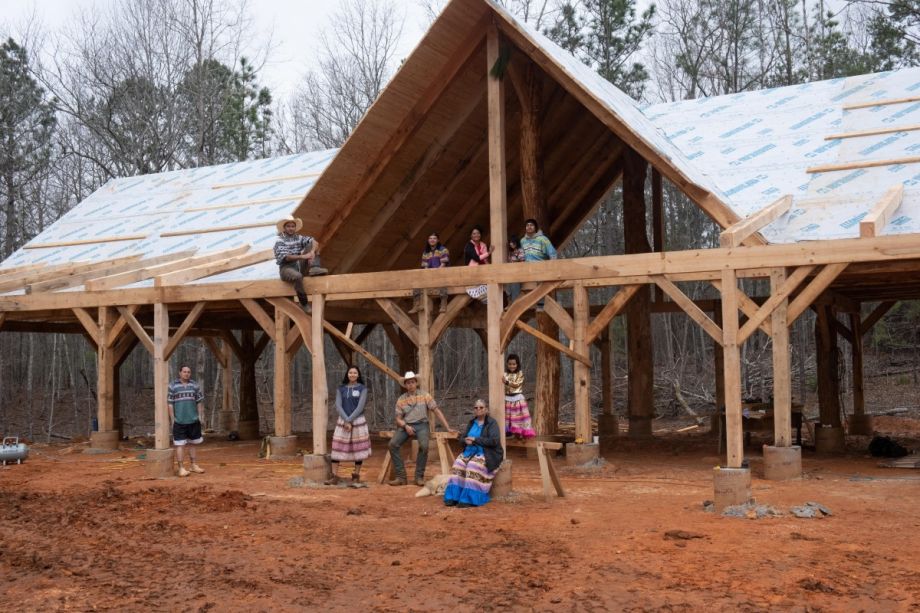Knowledge
We will generate and share information and knowledge about what, who, and how activities are taking place at the intersections of Alternative Economy efforts, economic and social transformations, and involvement of artists working towards sustainable financial opportunities.
Resources
We want to share what is influencing our work. This is not meant to be comprehensive, and we will continue to add over time. Select a category for a corresponding resource.

Artists

Disruption

Frontline Communities

Sustaining Economic Paradigms
Artists
CCI not only values artists and cultural producers in shaping society but we also recognize that economic systems and financial instruments must work for them. Artists are key to begetting cultural change, and they undergird community identity in place-based and identity-based ways, in real reality and online. Artists are the progenitors of the growing numbers of gig worker and, through them, we can ensure that economic solutions work at community levels and for all those who share artists’ challenging financial conditions.
Who we’re learning from: Cornell University’s Gig Economy Data Hub, Economic Security Project, Every Dollar, Independent Drivers Guild, Smart, Stanford University’s Basic Income Lab, Stockton Economic Empowerment Demonstration, The Freelancers Union, Y Combinator.
Solidarity Economies
Despite severe disinvestment from the philanthropic sector, the South is rich with stories that demonstrate the role that arts and culture have played in the survival of Southern people and in the regenerative structures that reflect a desire for self-determination:
Ragin, R. & Rangel, M.C. (2020). Activating legacies of culture, art, and organizingin the U.S. South: Executive Summary. Freedom Maps. Retrieved from Link
Anchor Institutions
Steve Dubb analyzes a new report from the Initiative for a Competitive Inner City looking at the economic power of arts organizations as anchor institutions:
Dubb, S. (2019, August 21). Can arts and cultural partners help anchor institutions find their soul? Nonprofit Quarterly. Retrieved from Link
Music Industry
Grateful Dead are a model for how to financially succeed in the music business:
Green, J. (2010, March). Management secrets of the Grateful Dead. The Atlantic. Retrieved from Link
A look at Kansas City's once-bustling economy for musicians in the 20th Century fueled by African American culture:
Larson, Z. (2020, December 8). There goes the neighborhood: What really caused the decline of 18th & Vine. Scalawag. Retrieved from Link
Artist-Support Experiments
First press "evidence" that demonstrates a trend toward collective-based organizations in the nonprofit arts sector:
Janiak, L. (2020, August 5). Bay Area theaters look to collective models to promote diverse crop of new leaders. San Francisco Chronicle. Retrieved from Link
Building Emergency Savings
Building Emergency Savings:
Legislation introduced by US Senators Cory Booker and Jerry Moran - S. 2797 “Refund to Rainy Day Savings Act”: (2016, April 13). Booker, Moran introduce bill empowering taxpayers to defer refund for rainy day savings. Retrieved from Link
Three steps to building emergency savings:
Despard, M., Friedline, T., & Birkenmaier, J. (2018, May). Policy recommendations for helping U.S. households build emergency savings. Grand Challenges for Social Work, No. 11-3. Retrieved from Link
Smoothing Income Fluctuations
On income volatility as the new normal—The Aspen Institute Expanding Prosperity Impact Collaborative:
Financial Security Program. (2016, May 1). Income volatility: a primer. Retrieved from Link
Universal Withholding that would work for employees and contract workers:
Erickson, A., & Meyer, I. (2016). Economic security for the gig economy: a social safety net that works for everyone who works. Retrieved from Link
Coronavirus aid is stress-free and quick for self-employed in Berlin:
Eddy, M. (2020, April 3). ‘Stress-Free’: Coronavirus Aid Flows Quickly to Berlin’s Self-Employed. Retrieved from Link
Contract Worker Protections
A look at how changes in self-employment tax, health insurance tax breaks, and extended protections will support gig workers:
Mulcahy, D. (2018, July 23). How U.S. law needs to change to support the self-employed and gig economy. Harvard Business Review. Retrieved from Link
This Aspen Institute report targets the complexity of tax filing among independent workers and makes recommendations in order to facilitate tax filing processes for vulnerable workers:
Fitzpayne, A., Steward, S., & Pollack, E. (2018, September 12). Tax simplification for independent workers. The Aspen Institute. Retrieved from Link
Independent Worker-Centered Benefits
A proposal for a new legal category, “independent workers,” for those who occupy the gray area between employees and independent contractors:
Harris, S. D., & Krueger, A.B. (2015, December). A proposal for modernizing labor laws for twentieth-first century work: the “independent worker.” The Hamilton Project. Retrieved from Link
Senator Elizabeth Warren on how the diminishment of employer-based worker protections requires fundamental changes to worker protections that confer benefits to individual workers:
Warren, E. (2016, May 19). Strengthening the basic bargain for workers in the modern economy. Retrieved from Link
Examples of Portable Benefit legislation/ideas in Washington, New York, and from Service Employees International Union (SEIU):
Quinton, S. (2017, February 23). With growth of the gig economy, states rethink how workers get benefits. Insurance Journal. Retrieved from Link
Portability of benefits conferred on individual vs. institutional/employer levels:
CA SB1234 : Senate Bill 1234 (2018). Retrieved from Link
Gig Economy & Artists
Leslie Hook, referenced jazz musicians from 1920s as popularizing the term “gig”:
Hook, L. (2015, December 29). Year in a word: gig economy. Financial Times. Retrieved from Link
As the number of freelancers and self-employed increase, cooperatives, trade unions, and mutual organizations can help ensure they have access to needed resources and benefits:
Conaty, P., Bird, A. and Ross, P. (2016). Not alone: Trade union and co-operative solutions for self-employed workers. Co-operatives UK. Retrieved from Link
Keeping labor laws and benefit expectations relevant:
Istrate, E. and Harris, J. (2017, November). The future of work: the rise of the gig economy. Retrieved from Link
Technology and the drive to lower labor costs are leading to a growing gig workforce:
Muhammed, A. (2018, June 28). 4 reasons why the gig economy will only keep growing in numbers. Forbes Magazine. Retrieved from Link
The new artist activism reflects a growing determination by some in the creative community to place their existential concerns before the public and policymakers:
Marks, P. (2021, January 8). Arts workers are building a labor movement to save a creative economy in peril. The Washington Post. Retrieved from Link
Disruption
AmbitioUS takes advantage of the displacement of old systems and practices due to generational attitudinal changes, demographic shifts, and technological disruptions. We exploit this moment of disruption to afford upstream-facing investments in structural solutions that work better for artists, cultural workers, creative entrepreneurs, and cultural producers. If anyone needs convincing that this is a moment of tremendous change and opportunity, and artists can be a part of new solutions, take a look here.
Who we’re learning from: Movement Generation, New Economy Coalition, Partners for a New Economy, Platform Cooperative Consortium, R Chain Cooperative, Resonate, Robin Hood Cooperative, The Next System.
Narrative Shift
This article makes the case for a community driven and accountable press.
Holliday, D., (2021, December 15). Journalism is a public good. Let the public make it. Columbia Journalism Review. Retrieved from Link
Disrupting Capitalism for Environmental Sustainability
In this political moment, at the brink of both economic and environmental collapse, it is time to look towards the next system. This paper looks at what is necessary to create a “Joyful Economy”:
Speth, G. (2017, April 17). The joyful economy. The Next System Project. Retrieved from Link
Ted Howard, The Democracy Collaborative, addressing Environmental Funders Network, on why environmental change requires economic change:
Howard, T. (2018, April 2). Addressing the systemic challenge at the heart of escalating inequality and environmental destruction. The Next System Project. Retrieved from Link
The solidarity economy offers pathways that serve people and planet:
Kawano, E. (2018, May 1). Solidarity economy: building an economy for people & planet. The Next System Project. Retrieved from Link
This report tells the story of the internal work within the Funders for a Just Economy to center race, gender, sexual orientation, class, and migration status more explicitly:
Ryono, M. (2018, May). Journey towards intersectional grant-making. Funders for a Just Economy and A Program of the Neighborhood Funders Group. Retrieved from Link
Local Currencies
With the rise of alternative currencies, this article explores 10 of these new forms of exchange:
Gross, J. (2013, July 15). 10 alternative currencies, from Bitcoin to BerkShares to sweat to laundry detergent. Retrieved from Link
The town of Tenino has started issuing its own wooden dollars that can only be spent at local businesses. Here's an analysis of how it works:
Waters, M. (2020, June 12). Why a small town in Washington is printing its own currency during the pandemic. The Hustle. Retrieved from Link
Employee Ownership
After a successful legacy of being 100 percent owned by employees, New Belgium was acquired by the Japanese conglomerate, Kirin Holdings, thus begging field experts to ask what is next to come for the company.
Rose, J. (2019, December 10). Last call: A forum on the end of employee ownership at New Belgium. Fifty by Fifty. Retrieved from Link
After 47 years since opening, Taylor Guitars transferred complete ownership to its employees after converting to an Employee Stock Ownership Plan in April 2020.
Varga, F. (2021, January 11). Taylor Guitars announces complete transition of ownership to its employees. The San Diego Union-Tribune. Retrieved from Link
Funding Models and Transformative Possibilities
An important illustration of nonprofit funding and the differences between for-profit and nonprofit financial management:
McCambridge, R. (2019, November 21). Pizza and a laugh--A reminder about your nonprofit financial stress level. Nonprofit Quarterly. Retrieved from Link
A general overview of Transform Finance's framework, Grassroots Community Engaged Investing, and its insistence on power redistribution during the investment process that lead to equitable outcomes.
Dubb, S. (2021, March 31). Power building meets impact investing. Nonprofit Quarterly. Retrieved from Link
This report maps the types of capital that women entrepreneurs and entrepreneurs of color are accessing and the intermediaries that are-or could be-supporting them. It also aims to assess the barriers these entrepreneurs face when accessing capital markets, and to identify ways that philanthropists can increase their access to capital.
Cabrera, D., Fowler, G., Gulin, A., Kharas, C., Lyons, M., McArthur, L., Whelpton, S., Wong, Z. (2019, February). An Economy for All: How Philanthropy Can Unlock Capital for Women Entrepreneurs and Entrepreneurs of Color through Inclusive Investing. With support from JPMorgan Chase & Co., the New Venture Fund’s Harriet Ecosystem Initiative partnered with Arabella Advisors to produce this report. Retrieved from Link
As more investors seek to direct capital toward racial equity, here’s a starter list to help.
(2021, November). A Starting List to Invest for Racial Equity. This work is a join project of Bridgespan Social Impact, the Global Impact Investing Network (GIIN), PolicyLink, and CapEQ. Retrieved from Link
Opportunities in Digital Creative Economies
A look at how virtual reality can augment purchases in the future. This article is still based in a capitalist market, gives an opening to think about how to build a new economy in VR and AR spaces:
Shuster, B. Could virtual reality revitalize the economy? Wired. Retrieved from Link
This white paper presents findings from interviews and research on the impact of emerging technologies on the creative economy:
McKinsey & Company & the World Economic Forum. (2018, February). Creative disruption: the impact of emerging technologies on the creative economy. Retrieved from Link
Shifting Capital
This article builds understanding around the structural, legal impediments to empowering retail retirement investors.
Orsi, J., Fernandes, J. (2021, April). Rethinking Retirement Savings Harvard Law Review. Retrieved from Link
Fintech Solutions that Align
An infographic that highlights how Fintech is disrupting the global finance industry:
Desjardins, J. (2016, August 3). How fintech is digitally disrupting the financial world. Visual Capitalist. Retrieved from Link
Platform Coops
It is still possible to democratize the internet and ensure it is working for users rather than corporations:
Scholz, T., & Schneider, N. eds. (2017). Ours to hack and to own: the rise of platform cooperativism, a new vision for the future of work and a fairer internet. New York, NY: OR Books. Retrieved from Link
Open-source platforms, alone, are not shifting the current economic paradigm:
Schneider, N. (2016, May 21). Platform cooperativism as a critique of open-source. The Internet of Ownership. Retrieved from Link
Platform Cooperatives can ensure humans have the ability to continue to earn income as technology phases out the need for human workers:
Rosenblatt, G. (2018, April 20). When robots take our jobs, platform cooperatives are a solution. Yes! Magazine. Retrieved from Link
In depth look at who is benefiting from the “sharing economy” and why we shouldn’t settle for VC economic control:
Scholz, T. (2014, December 5). Platform cooperativism vs. the sharing economy. Retrieved from Link
A look at platform cooperatives and a community investment model that will help them scale:
Borkin, S. (2019, February). Platform co-operatives - solving the capital conundrum. Nesta and Co-operatives UK. Retrieved from Link
bHive, an Australia-based platform coop, is looking for innovative ways for people to come together to feed a localized (financial and social) economy:
Frost, A. (2021, January 28). It takes a village: An alternative social media platform seeks to end the epidemic of loneliness and isolation. Shareable. Retrieved from Link
Sustainable Blockchain
The future of blockchain, it’s ability to be an economic disruptor and what can go wrong:
Tapscott, D. (2016, May). How blockchains could change the world. McKinsey & Company. Retrieved from Link
How blockchain can revolutionize the digital art marketplace:
Bailey, J. (2017, December 27). The blockchain art market is here. Artnome. Retrieved from Link
An introduction to blockchain and how it works beyond digital currency:
Kazmierski, M. (2018, June 13). Blockchain the key to our new economy. Reno Gazette Journal. Retrieved from Link
Some economists say cryptocurrency is a disruptive innovation that will blossom throughout Africa if the continent learns to embrace it:
Rao, P. (2018, July). Africa could be the next frontier for cryptocurrency. Africa Renewal. Retrieved from Link
The electricity required for a bitcoin transaction results in hundreds of thousands of times as much CO2 emission as a credit card payment:
Jordans, F. (2019, June 14). Correction: bitcoin-carbon footprint story. Associated Press. Retrieved from Link
Frontline Communities
The current economic paradigm of free market capitalism has left people and the planet struggling. The quest for “profit over all else” has particularly hurt Native American, African American, rural, and immigrant communities. For us, economic justice is racial justice, and both are necessary conditions that can lead to robust communities that are self-determining financially and taking care of their physical environment.
Who we’re learning from: Cooperation Jackson, Cooperation Richmond, Cooperative Community of New West Jackson, Dr. Jessica Gordon Nembhard, Evergreen Cooperatives, Next City, The Runway Project.
Relationship to Land
Native communities across the Americas continue to demonstrate resilience and resistance to violent efforts to separate them for their land, culture, and one another. U.S. Department of Arts of Culture created this guide to acknowledging the traditional Indigenous inhabitants of the land as one way to show respect to Indigenous people's history, culture, and current existence:
U.S. Department of Arts and Culture. (2017). Honor Native land: A guide and call to acknowledgment. Retrieved from Link
Racial Wealth Gap
This Pew Research Center survey finds profound differences between black and white adults in their views on racial discrimination, barriers to black progress and the prospects for change:
Pew Research Center. (2016). On Views of Race and Inequality, Blacks and Whites Are Worlds Apart. Retrieved from Link
Without a serious change in course, the U.S. is heading towards a racial and economic apartheid state:
Asante-Muhammad, D., Collins, C., Hoxie J., & Nieves, E. (2017, September 11). The road to zero wealth: How the racial wealth divide is hollowing out America’s middle class. Prosperity Now. Retrieved from Link
The Roosevelt Institute evaluated two decades of the Ford Foundation’s grant-making that centers the racial wealth gap (RWG) and provided recommendations for how the philanthropic sector can more effectively address the issue:
Flynn, A., & Mabud, R. (2019, July). Ford Foundation racial wealth gap evaluation: Summary of findings. Roosevelt Institute. Retrieved from Link
The U.S.'s particular form of capitalism and the economic culture of speculation descend from slavery:
Desmond, M. (2019, August 14). In order to understand the brutality of American capitalism, you have to start on the plantation. New York Times Magazine. Retrieved from Link
The sugar industry not only benefited from slavery but continues to discriminate against African American farmers and farm laborers:
Gibran Muhammad, K. (2019, August 14). The sugar that saturates the American diet has a barbaric history as the 'white gold' that fueled slavery. New York Times Magazine. Retrieved from Link
Nikole Hannah-Jones discusses the ties between the ongoing fight for Black liberation and freedoms for all who call the U.S. home:
Hannah-Jones, N. (2019, August 14). Our democracy's founding ideals were false when they were written. Black Americans have fought to make them true. New York Times Magazine. Retrieved from Link
Jeneen Interlandi shares how federal and state policies have intentionally and systematically continued to prevent African Americans from accessing affordable, quality, health care:
Interlandi, J. (2019, August 14). Why doesn't the United States have universal health care? The answer has everything to do with race. New York Times Magazine. Retrieved from Link
The wealth gap between White and Black Americans continues to grow as the government continues to deny reparations for slavery:
Lee, T. (2019, August 14). A vast wealth gap, driven by segregation, redlining, evictions, and exclusion, separates back and white America. New York Times Magazine. Retrieved from Link
Residents are meeting up each month to learn about buying property as a way to build generational wealth:
Flores, J. (2019, December 12). Inspired by Nipsey Hussle, they're trying to 'buy back' South LA. Curbed Los Angeles. Retrieved from Link
This policy brief centers the economic principle of 'Black women best,' which argues that if Black women can thrive in the economy then it must finally work for all, to advocate for opportunities to redesign exclusionary institutions and propose immediate and long-term economic solutions to the COVID-19 pandemic:
Bozarth, K., Western C., & Jones, J. (2020, September). Black Women Best: The Framework We Need for an Equitable Economy. Groundwork Collaborative & Roosevelt Institute. Retrieved from Link
This report codifies a methodology for corporate businesses to look at racial inequities as a framework and tool to find new sources of innovation and business growth.
Blackwell, A., Kramer, M., Vaidyanathan, L., Iyer, L., and Kirschenbaum, J. PolicyLink (2021). Retrieved from Link
NPR's Lulu Garcia-Navarro speaks with Andre Perry, senior fellow at the Brookings Institution, about a nationwide pandemic-era increase in Black-owned small businesses:
Garcia-Navarro, L. (2021, May 30). Black Entrepreneurship Booms During Pandemic. National Public Radio. Retrieved from Link
How urban development subverts the agency Black communities must exert in order to sustain their local economies and spur generational wealth:
Horwitt, F., Owens-Chaplin, L., Smith, T. (2021, May 31). Tulsa's Greenwood neighborhood wasn't America's only Black Wall Street. USA Today. Retrieved from Link
Significant student loan debt has prevented millions of Black college graduates from attaining the same financial freedom as many of their white counterparts:
Terry Ellis, N. (2021, October 6). A Texas teacher can't afford health insurance or buy a home. Here's why Black leaders say the student loan crisis is a civil rights issue. CNN.com. Retrieved from Link
According to a recent study, minority owned homes are undervalued by an average of nearly $50,000 during the appraisal process in the US. Bankrate financial experts created a guide to explain the unfortunate realities of racism and redlining in real estate, the home appraisal gap, and how to best overcome this reality.
Ostrowski, J. (2021, September 21). Black neighborhood home appraisal gap is real and persistent, Freddie Mac reports. Bankrate.com. Retrieved from Link
This article goes inside the world of Black Bitcoin and explains how crypto is about making more than just money.
Ross, J. (2021, October 15). Bitcoin's Risk and Reward for Black Investors. Time. Retrieved from Link
Black Commons
J.T. Roane explores histories of the Black commons:
Roane, J.T. (2017, February 28). Towards usable histories of the Black commons. Black Perspectives. Retrieved from Link
In 2011, brothers Melvin Davis and Licurtis Reels refused to leave their land in North Carolina. As an "heirs property" having the deed and a court order declaring that the land was theirs wasn't enough for the brothers to prove ownership:
Presser, L. (2019, July 15). Kicked off the land: Why so many black families are losing their property. The New Yorker and ProPublica. Retrieved from Link
This article looks to economic models of communal wealth as a way to encourage financial growth and development among and within Black communities:
Agyeman, J. & Boone, K. (2020, Jun 26). How a Black Commons Could Help Build Communal Wealth. yes! Solutions Journalism. Retrieved from Link
Emergent Economy
An overview of how The Runway Project is working to overcome institutionalized racism in lending:
Abello, O. P. (2016, October 25). Closing the “friends and family” capital gap for entrepreneurs of color. Next City. Retrieved from Link
Rodney Foxworth, BALLE, on the need to lean in to an emergent economy that works for all:
Foxworth, R. (2018, February 18). Wealth inequality and the fallacies of impact investing. Retrieved from Link
Tiffany Brown, Founding Partner of Chordata Capital, outlines multiple ways in which we can invest in Black Liberation:
Brown, T. (2020, June 12). Taking a loving warrior stance and investing in Black liberation. Retrieved from Link
Economic Justice
Communications that support efforts to eliminate poverty and strengthen economic equality:
(2017). Talking about economic justice. The Opportunity Agenda. Retrieved from Link
A broad-based coalition of British business, trade union, civil society, and academic professionals agree, the economy will be more successful if it is fair:
Kibasi, T. (2017, September 6). What is economic justice - and why does it matter? New Statesman America. Retrieved from Link
What would happen if collective bargaining wasn’t limited to discussing workers’ wages and benefits, but also included rent control and other tools for increased community-power:
Brady, M. (2019, September 14). Workers and renters of the world, unite! Jacobin. Retrieved from Link
In November 2019, Philadelphia City Council passed the Domestic Worker Bill of Rights guaranteeing domestic workers breaks, paid time off, and other civil protections. It also includes the first mandate to create an employer-funded portable benefits system for domestic workers:
Abello, O.P. (2019, November 7). Philly sets new gold standard for domestic worker protections. Next City. Retrieved from Link
Sustaining Economic Paradigms
AmbitioUS draws a connection between the movement for Alternative Economy, currently known to most as New Economy (i.e., sustaining and sustainable without exploiting or extracting) and the need for artists of all types, backgrounds, and levels to afford their practice. In short, we envision not only a future wherein the economy works better for people and planet over institutions but also a satisfying world wherein creativity, imagination, and engagement are not marginalized “leisure activities” but are structurally supported. With this lens, we prioritize worker ownership and protections and community-based control of assets.
Who we’re learning from: Boston Ujima Project, Common Future, Democracy at Work Institute, Democracy Collaborative, ICA Group, Institute for Local Self Reliance, Loconomics Cooperative, National Center for Employee Ownership, Next City, P2P Foundation, United States Federation of Worker Cooperatives.


